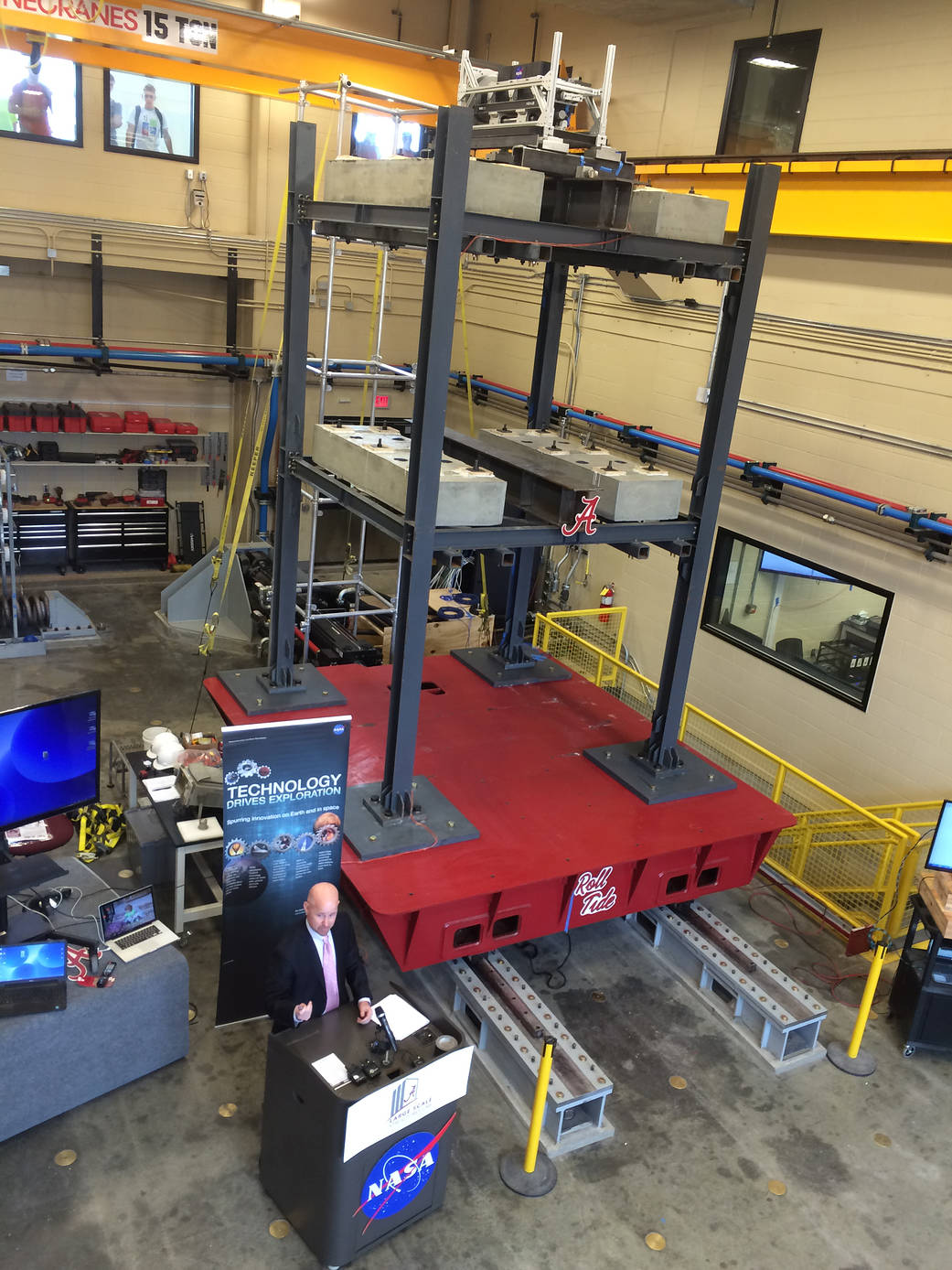Rob Berry, an engineer at NASA’s Marshall Space Flight Center in Huntsville, Alabama, and the principal investigator for the disruptive tuned mass system addresses media before tests at the Large Scale Structures Laboratory at the University of Alabama in Tuscaloosa. NASA and University of Alabama engineers tested a disruptive tuned mass system April 14 to demonstrate the technology’s ability to mitigate a building’s response to earthquakes. Originally developed to solve vibration issues encountered during a rocket launch, the disruptive tuned mass system has potential applications across multiple industries to improve damper systems on ships, automobiles, airplanes, helicopters, bridges and much more. The university’s high-performance, uniaxial,12-foot-by-13-foot table is designed to handle a two-story building with a maximum payload of 20 tons. Working with computers, the table shakes the test article to simulate the seismic effects on a building. Marshall’s Technology Transfer Office supports the commercialization and transfer of the disruptive tuned mass system. NASA’s Technology Transfer Program ensures that technologies developed for missions in exploration and discovery are broadly available to the public, maximizing the benefit to the nation.
Image credit: NASA/MSFC/Brian C. Massey



























